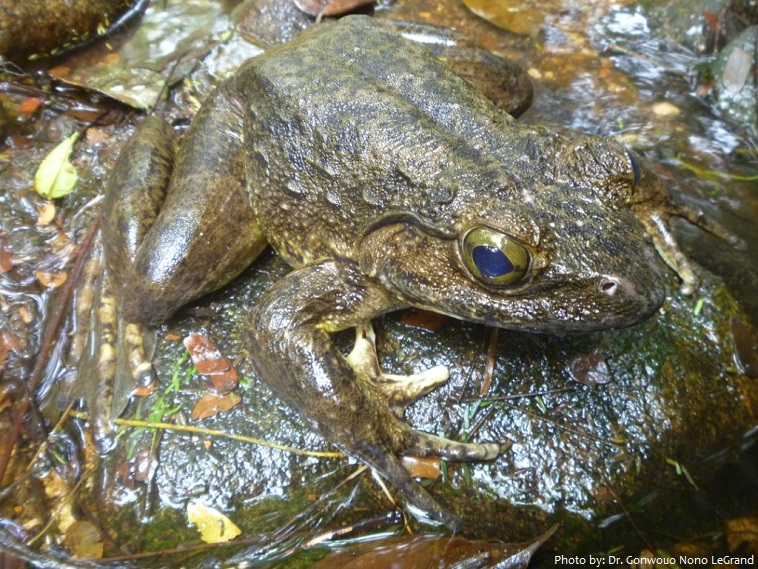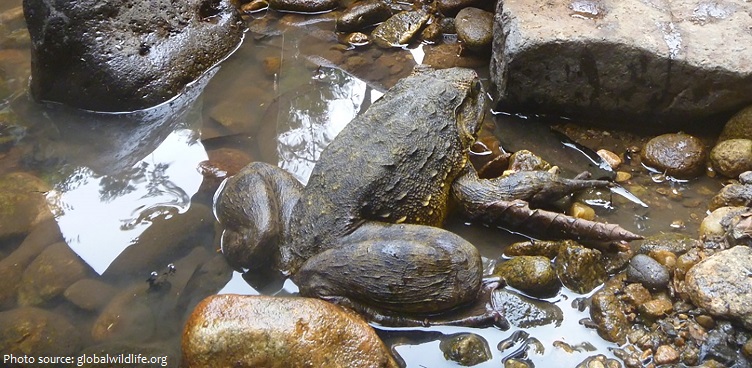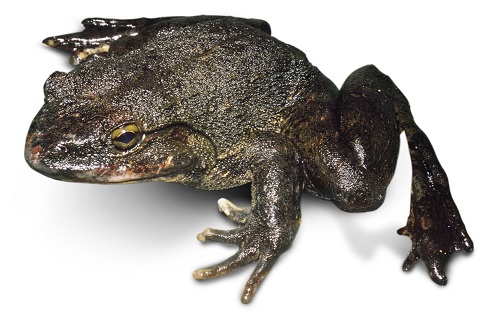The goliath frog is the largest living frog on Earth.
It is found in Equatorial Guinea and Cameroon in West Africa.
Goliath frogs live in or near fast-flowing rivers and waterfalls in dense, humid and relatively high-temperature rain forests.
The water is usually clean, oxygen rich, slightly acidic and usually around 20°C (68°F).
The lifespan of goliath frogs is about 15 years in the wild and up to 21 years in captivity.
Specimens can grow up to 32 cm (12.6 in) in length from snout to vent, and weigh up to 3.25 kg (7.17 lb).
They have a flattened, wide body with a triangular head. Their dorsal skin is granular and greenish brown and the ventral skin is a lighter yellowish green. The hind legs are long, front legs are shorter and stout, and all of the feet are extensively webbed.
Goliath frogs can jump almost 3 meters (10 feet) forward.
Goliath frogs feed on spiders, worms, and insects, such as dragonflies and locusts. They also eat smaller frogs, crabs, baby turtles, and young snakes. A bat reportedly was found in a goliath frog’s stomach.
Because the goliath frog lacks a vocal sac, it does not produce mating calls, a behavior generally present in frogs and toads. Males wrestles with other males to breed with females.
Males construct spawning and breeding areas alongside and within rivers by pushing rocks into semicircular patterns. The female lays thousands of eggs in the nest. That is where the parenting stops: they don’t even wait around to ensure the eggs hatch.
Goliath frog eggs and tadpoles are about the same size as other frogs despite their very large adult form. So the majority of the growth process occurs during the 75-90 days.
Goliath tadpoles are herbivorous and feed on a single aquatic plant, Dicraeia warmingii, found only near waterfalls and rapids, which may help explain their restricted range.
Goliath frog is preyed upon by snakes, Nile crocodiles, and Nile monitors, among other predators.
The primary threat to the goliath frog is hunting, as it is considered a food source in its native range. The IUCN has highlighted the need for conservation measures, in cooperation with local communities, to make sure the hunting is at sustainable levels.
They were extensively exported to zoos and the pet trade, but have proven shy and nervous in captivity.
The goliath frog is also called the giant slippery frog.
Can you get big warts from goliath frogs? No! You can’t get warts from any frog or toad.


